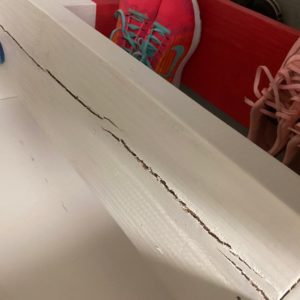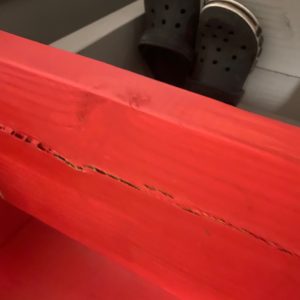I am new to wood working and recently built a shelf out of 2x8s. After about a month of storing light items (shoes) on it in the garage, we have noticed several very large splits in the wood. These are both on the shelves and down the side of the bookcase. Any insight on what happened and how to prevent this in the future?
Discussion Forum
Get It All!
UNLIMITED Membership is like taking a master class in woodworking for less than $10 a month.
Start Your Free TrialDiscussion Forum
Digital Plans Library
Member exclusive! – Plans for everyone – from beginners to experts – right at your fingertips.
Highlights
-
Shape Your Skills
when you sign up for our emails
This site is protected by reCAPTCHA and the Google Privacy Policy and Terms of Service apply. -
 Shop Talk Live Podcast
Shop Talk Live Podcast -
 Our favorite articles and videos
Our favorite articles and videos -
E-Learning Courses from Fine Woodworking
-
-
 Fine Woodworking New England Event
Fine Woodworking New England Event














Replies
Two possibilities:
1 Differential contraction between the split parts and the parts at either end they're attached two, because of changes in the moisture content of the wood. Wood expands and contracts much more across the grain than along the length of the grain when it's moisture content changes. Such changes can happen with just weather changes (changes in the atmosphere's humidity) or when you move a piece of wood from a more to less moist place (e.g. outdoors to indoors; unheated shop where you made it to the inside of a centrally heated house).
If end grain of any length is all glued to long grain where they meet, the unequal changes in dimensions can cause tension which relieves via a split.
2 That timber looks like some kind of softwood - pine or spruce perhaps - with some knots in it possibly. Such timber often has a lot of inner tension because the grain is all over the place due to branches once having grown out of the main trunk (hence the knots). Knots, being the root of branches, may also have some reaction aspects (inner tensions caused by gravity acting on a branch) encased by the whole plank. These tensions can make the timber vulnerable to "shakes" - splits caused by release of the increased inner tensions as the moisture content changes.
Lataxe
That appears to be spruce or pine construction lumber. When you buy such lumber it is not thoroughly dried - even though it's advertised as "kiln dried".
When you get the lumber home it continues to dry which leads to twisting and cracking. And the problem is 10 times worse if the pieces you've selected include the center of the tree (often called the pith).
When I use construction lumber in my projects I try to find pieces that don't include the pith. I look for growth rings that are close together indicating the tree grew more slowly and will be more stable.
I bring my lumber home and immediately slap some paint on the cut ends of each board to act as a sealer, then stack them with stickers between the boards to allow air to circulate evenly all around.
Temperature and humidity will determine how quickly the boards dry. I leave them at least two weeks - more in the summer when my shop is humid.
Most of the twisting and cracking that is going to happen, does so during this drying period.
Then you can cut your project parts from the straightest sections of the boards.
If you have the equipment, you can joint and plane them as well.
Mike
Yeah, that's what is usually referred to as dimensional lumber. A 2x6 or 2x8, I'm guessing. They are very wet, as bought, and will continue to dry out and crack.
As mentioned above, they also include the pith. If you picture the stump of a tree, you can see the rings. Dimensional lumber usually includes the "bullseye," the very center part of the concentric rings. Id bett a milliiin bucks thats the part of the tree your board came from. And nothing on earth will keep that from splitting as it finishes drying out.
If you search the stack, you can likely find boards that don't include the pith. Often the best boards are the widest, a 2x12. If tgge pith is in the middle, cut out that section, and you'll have two nicely quartersaw pieces on either side. Those are the choice cuts -- the most stable -- after the pith is removed.
Or, just get lumber from other than the construction aisle.
This forum post is now archived. Commenting has been disabled